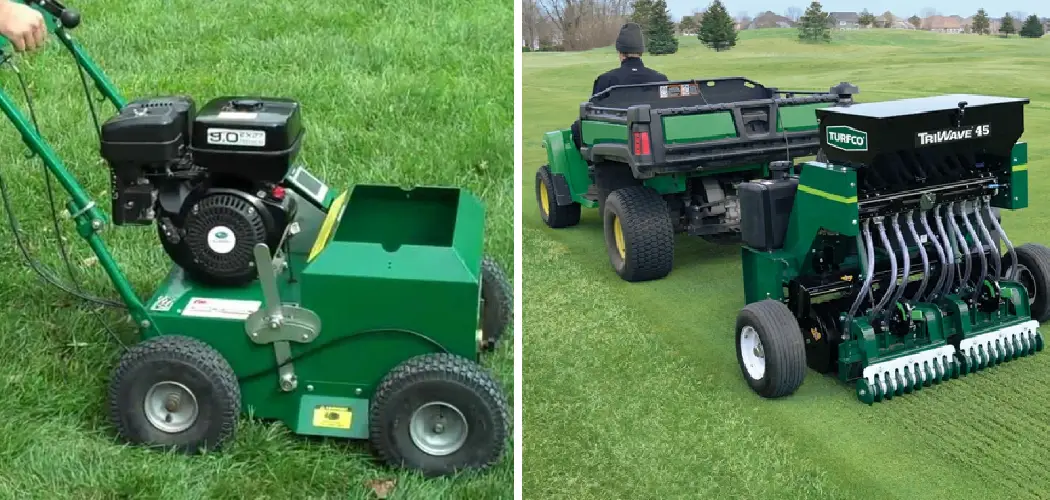Are you looking for a way to quickly and easily transform your outdoor space? An overseeder can be the perfect tool for livening up your backyard or garden area! Whether you’re working with an existing lawn that needs some freshening up or are starting a new lawn from scratch, understanding how an overseeder works is key.
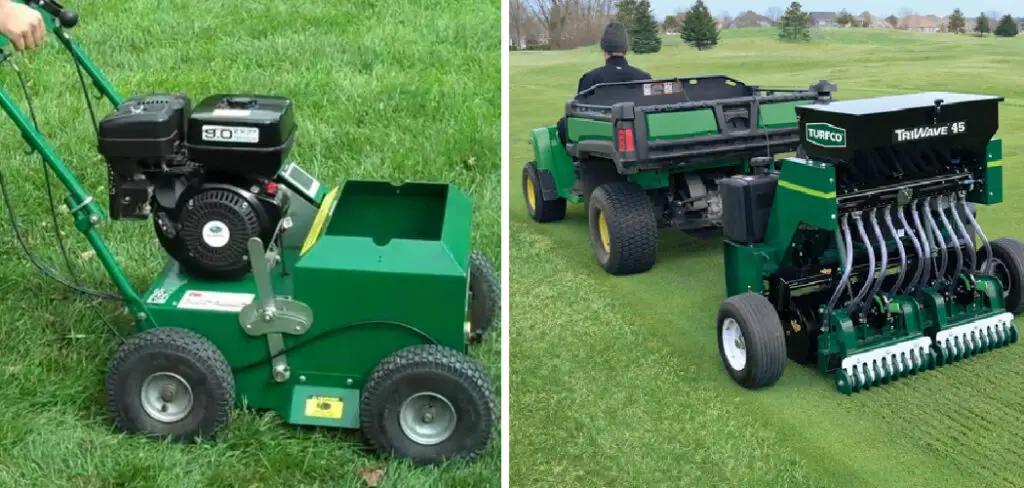
In this blog post, we’ll cover all the basics of how to use an overseeder, including what it does, when to use one, and tips for making sure you get the most out of it. Read on to become an expert in managing your outdoor oasis!
What is an Overseeder?
An overseeder, also known as a slit seeder or a verticutter, is a specialized gardening machine used to plant grass seeds in large areas. It works by making small cuts into the soil and depositing seeds at regular intervals, providing ideal conditions for new grass to grow.
This process is known as overseeding and it can help to revive or strengthen an existing lawn, as well as filling in bare spots and creating a lush green carpet.
Step-by-step Guidelines on How to Use an Overseeder
Step 1: Prepare Your Lawn
Before using an overseeder, it’s important to prepare your lawn properly. Start by mowing the grass short and raking up any debris or thatch (dead grass and roots) that may be present. This will allow the overseeder to reach the soil easily and increase seed-to-soil contact for better germination. Preparing the soil beforehand by loosening it up with a rake or aerator can also help to improve results.
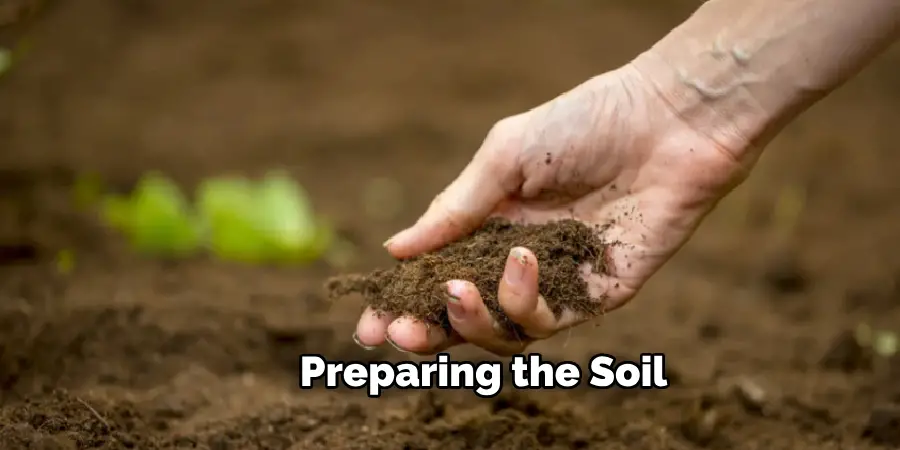
Step 2: Adjust the Depth and Spacing
Every overseeder is different, so make sure to read the manual before using it. Adjusting the depth of cut and spacing between seeds will depend on your specific grass type, seed type, and desired results.
Generally, overseers have adjustable settings that allow for customization according to your needs. While setting the depth, make sure to avoid cutting too deep into the soil as this can damage existing grass.
Step 3: Load the Seed Hopper
Once you’ve prepared your lawn and adjusted the depth and spacing, it’s time to load the seed hopper with a high-quality grass seed blend. Make sure to choose a variety that is suitable for your climate and growth conditions. Make sure to follow the manufacturer’s instructions on how much seed to use per square foot of lawn.
Step 4: Start Overseeding
Now that everything is set up, start pushing the overseeder across your lawn in straight lines, making sure to overlap each passes slightly for even coverage. Keep a steady pace and avoid going too fast or too slow to ensure proper seed distribution. When you’re finished, go over any areas where you may have missed or need a little extra seeding.
Step 5: Water and Maintain
After overseeding, it’s crucial to water your lawn properly. The soil should be kept moist but not soaked until the seeds germinate and new growth begins to appear. Depending on seed type and weather conditions, this could take anywhere from 7 to 14 days. Keep an eye on your lawn and make sure to water regularly until the new grass is established.
Following these steps and maintaining your lawn with proper watering, mowing, and fertilizing will ensure that you get the most out of your overseeder. By using an overseeder, you can easily achieve a lush and healthy lawn without having to spend a lot of time or effort.
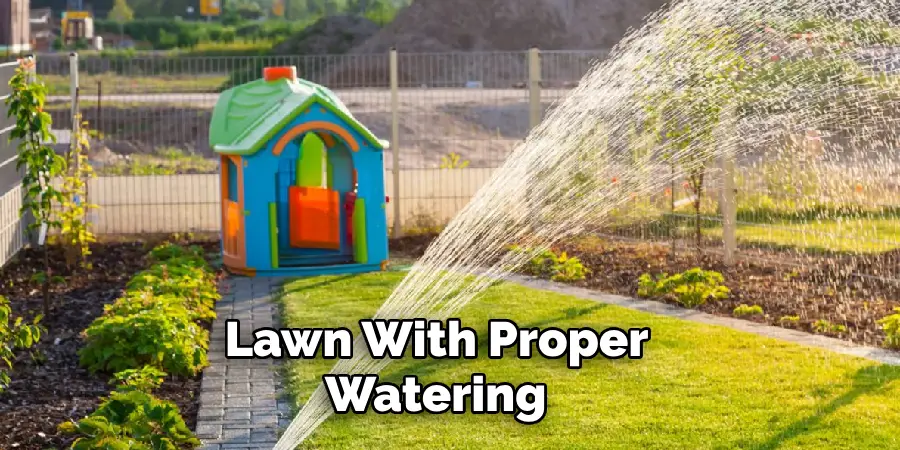
Additional Tips and Tricks to Use an Overseeder
1. Before using an overseeder, make sure to mow your lawn or turf in the opposite direction of how you plan to overseed. This will help loosen up the soil and create a better surface for the seeds to take root.
2. Avoid using an overseeder on wet soil or turf. The blades can easily clog and cause uneven seeding. Wait until the grass is completely dry before using the overseeder.
3. If your overseeder has adjustable blades, start with a lower setting and gradually increase as needed. This will prevent damaging the existing grass and allow for better seed distribution.
4. For best results, use high-quality seeds specifically designed for overseeding. These seeds are often coated to protect against pests and diseases, ensuring better germination rates.
5. Consider aerating your lawn or turf before overseeding. This will improve soil compaction and allow for better absorption of water and nutrients for the new seeds.
6. If you have a large area to oversee purchasing one. This can save you money and prevent storing a bulky piece of equipment., consider renting an overseeder rather than
7. Don’t be afraid to be overseen multiple times in a season. This can help fill in any thin or bare spots and create a fuller, healthier lawn or turf.
8. After overseeding, make sure to water the area frequently but lightly. This will keep the soil moist for optimal seed germination without causing it to become too soggy.
9. To prevent damaging new seeds when mowing, wait until they have reached a height of at least 3 inches before cutting. This will allow them to establish stronger roots.
10. Be patient and give the overseeding process time to work. It may take several weeks for new grass to fully grow in, but the end result will be worth it.

Following these tips and tricks will help you get the most out of your overseeder and achieve a healthy, lush lawn or turf. Remember to always read the manufacturer’s instructions and take proper safety precautions when using any equipment. Happy overseeding!
Things You Should Consider to Use an Overseeder
1. Make sure to overseeder during the appropriate time for your region’s climate. Overseeding in extreme temperatures or during a drought can hinder the germination process.
2. Prepare the seeding area by removing any debris, such as rocks or sticks, and raking the surface to loosen up compacted soil. This will provide a better environment for the seeds to take root.
3. Consider using a starter fertilizer along with overseeding to give your new grass a boost of nutrients for growth. Consult with your local garden center for recommendations on the best fertilizer for your specific type of grass.
4. Take note of any slopes or uneven areas in your lawn or turf and adjust the overseeded settings accordingly to ensure an even distribution of seeds.
5. If you have pets, make sure to keep them off the seeded area until the new grass has fully established. Their urine can damage new seeds and hinder growth.
6. Overseeding can also help control weeds by filling in any bare spots and crowding out potential weed growth. However, if you have a significant weed problem, it’s best to address it before overseeding.
7. Keep track of the weather forecast and try to overseed on a day when there is no rain predicted for at least 24-48 hours. This will give the seeds enough time to settle into the soil before being washed away.
8. When using an overseeder, make sure to overlap each pass slightly to ensure complete coverage of the area. This will prevent any missed spots or patchy areas.
9. If you are overseeding a large area, consider breaking it up into smaller sections and overseeding in different directions for even distribution.
10. After overseeding, avoid heavy foot traffic on the seeded area until the new grass has established and reached a height of at least 2 inches.
11. Regular maintenance is key to achieving and maintaining a healthy lawn or turf. This includes proper watering, fertilizing, and mowing practices along with overseeding as needed.
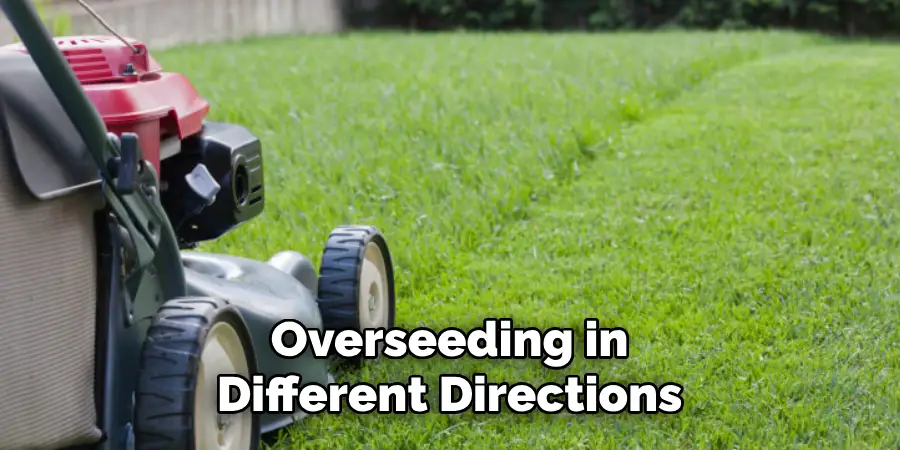
By following these additional tips and considering all factors, you can successfully use an overseeder to improve the health and appearance of your lawn or turf. As with any landscaping practice, regular maintenance and care will ensure long-term success.
Frequently Asked Questions
When Should I Use an Overseeder?
The best time to use an overseeder is during the fall season. This allows for the fresh seeds to germinate and establish strong roots before harsh weather conditions in winter arrive. However, it can also be used in spring if needed.
How Often Should I Use an Overseeder?
It is recommended to use an overseeder once a year, preferably during fall or spring. Overusing an overseeder can harm the grass and cause damage to your lawn. Only use it when necessary.
How Do I Prepare My Lawn for Overseeding?
Before using an overseeder, make sure to mow your lawn shorter than usual and remove any debris or thatch. This will allow the seeds to penetrate into the soil easily and germinate properly.
How Deep Should the Seeds Be Planted?
The ideal depth for overseeding is approximately 1/4 inch deep. This can vary depending on the type of grass being planted, so it’s best to check with your local gardening center or seed supplier for specific instructions.
How Long Will It Take for the New Grass to Grow?
It typically takes around 7-14 days for new grass to emerge from the soil. However, this can also depend on factors such as weather conditions and proper watering.

How Often Should I Water After Overseeding?
Watering is crucial for the success of overseeding. It is recommended to water lightly 2-3 times a day for the first 2 weeks, then gradually decrease to 1-2 times a day for the next 2 weeks. After that, follow your normal watering schedule for established grass.
Conclusion
Now you know how to use an overseeder, the best time to use it, and how to properly care for your lawn after overseeding. Remember to always follow the instructions provided by the manufacturer and consult with a professional if needed.
With proper maintenance, your lawn will be healthy and lush in no time! Happy overseeding! So go ahead, give your lawn some extra TLC, and enjoy a beautiful green space all year round. Remember, a well-maintained lawn not only adds to the aesthetics of your home but also provides numerous environmental benefits. Happy gardening!

